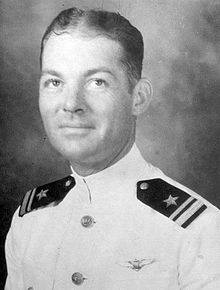A LEADER OF QUIET DIGNITY
George Leon Smith, III was born a century ago today on November 27, 1912 in the railroad community of Stillmore, Georgia. In 1959, Smith began his tenure as Speaker of the House of Representatives during one of the most turbulent political and social decades in the history of Georgia. When he died at the age of sixty-one, Speaker Smith was one of the most powerful and admired speakers as well as being the longest serving house leader in the long history of Georgia.
George Smith, a son of DeSausaure Degas Smith and Sarah Gladys Wilder, graduated from Swainsboro High School before attending the University of Georgia, where he was a member of Delta Tau Delta and Blue Key. Smith, a member of the Colby Smith clan of Washington County, Georgia, descended from a family known for its public service to the State of Georgia.
Smith, first elected as the Solicitor of Swainsboro City Court in 1937, began his 29-year legislative career with his election to the Georgia legislature representing his native county of Emanuel in 1944. Smith served as the attorney for the City of Swainsboro for three decades. Smith won reelection in 1946 and 1948, and finished his career with an even dozen unopposed races.
In 1947, Smith was chosen to serve as Speaker Pro Tempore of the Georgia House of Representatives, a political rarity for a first term state representative. He filled that high position with dignity until the end of 1958, when he was first chosen as Speaker of the House under an appointment by Governor Ernest Vandiver.
Smith's initial term as speaker ended in 1963, when newly elected Governor Carl Sanders appointed the other George Smith, George T. Smith, to replace him. The Swainsboro attorney, a Sanders supporter, returned to the office of Majority Whip and Speaker Pro Tempore until 1967.
It was in the election year of 1966 when George L. Smith rose to prominence in Georgia's political affairs. In fact, during that year when the country was finding itself in one crisis after another, one of the state's most contested gubernatorial elections took place.
Staunch segregationist, Lester Maddox, was selected as the Democratic candidate, defeating former Democratic governor, Ellis Arnall, in the primary. Although Maddox won the primary with less than 30% of the vote (Jimmy Carter finished in third place,) Arnall entered the general election as an independent candidate and managed to receive seven percent of the vote in the general election and thereby throwing the election into the House of Representatives. Bo Calloway, the Republican candidate, finished ahead of Maddox by some 3,029 votes. Georgia law law required a simple majority of the total votes cast. Going against the will of the plurality of the voters, the Democratically dominated legislature elected Maddox.
With Maddox's support, George L. Smith returned to the well as Speaker in 1967. It was the first time in the history of the state that the Georgia House of Representatives elected their own speaker, a move which signaled an independent, if only in theory, legislature. Meanwhile, the other George Smith, was elected Lieutenant Governor, who by law presided over the Georgia Senate.
George L. Smith suffered a stroke in November 1973 in his law office in Swainsboro. The long time legislator never recovered.
On December 9, 1973, Speaker Smith died. At that time, Smith had served more years as speaker (11) than any other person in Georgia history. Only his successor, Tom Murphy, who served in the position for 30 years, surpassed Smith in years of service as the state's top legislative officer.
His funeral was one of the largest gatherings of politicos in the state's history. Leading the State of Georgia at that time was Governor Jimmy Carter, who would be elected President of the United States within three years as the first Deep South president since Andrew Jackson.
Smith's body lied in state in the rotunda of the Georgia capital. The first person so honored was Confederate President Jefferson Davis. In recent times, Eugene Talmadge and Richard Russell were afforded the same high honor, an honor only afforded a dozen men in the state's history.
Smith fought many battles, some winning and some losing, during his twenty-nine years in the Georgia house. He fought to establish kindergartens in every school system and to extend the number of years a student had to complete prior to graduation.
Two of Speaker Smith's most lasting achievements are the establishment of Emanuel Junior College in Swainsboro and the movement to create a more independent legislature.
The State of Georgia honored Smith's long legacy of service to the state by naming the World Congress Center in Atlanta in his memory.







